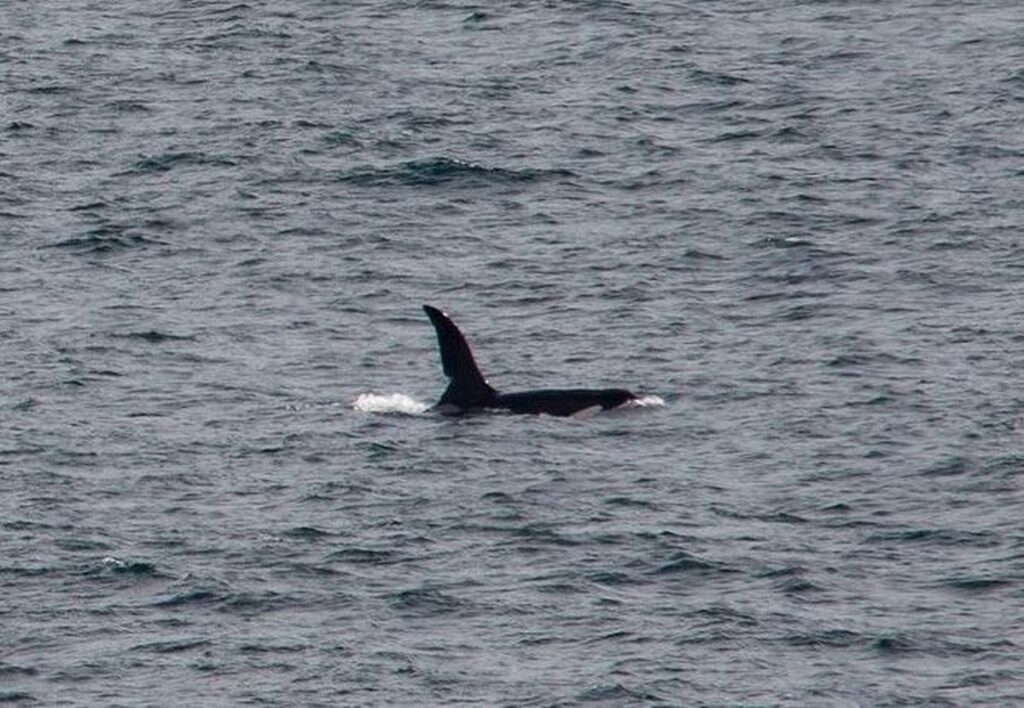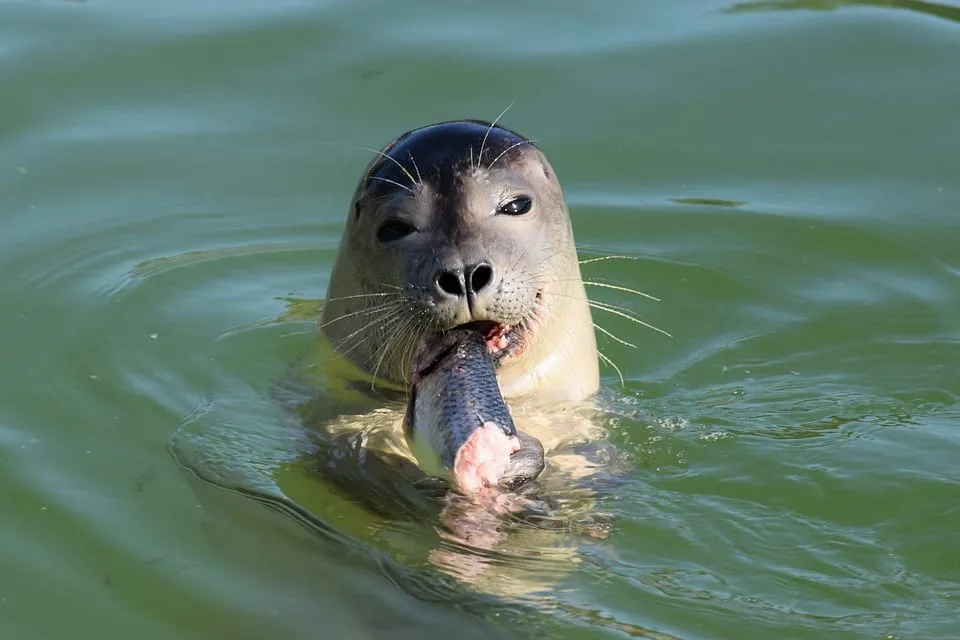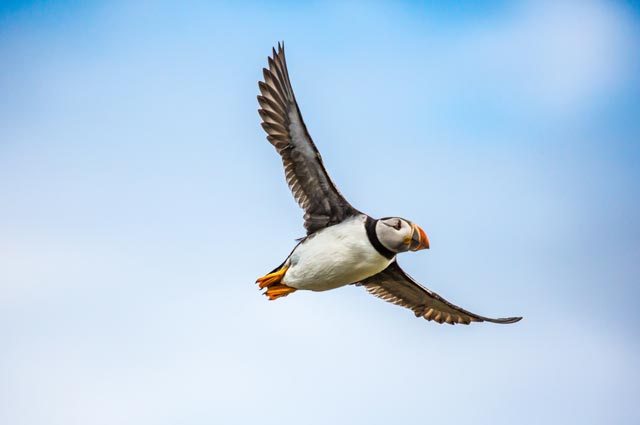Cornwall is the most exposed county in England to the Atlantic Ocean, which is home to a variety of marine animals. We’re going to look into which animals have been spotted around the Cornish coastline, from uncommon shark sightings to large turtles and what could happen if the water temperature rises in our seas.
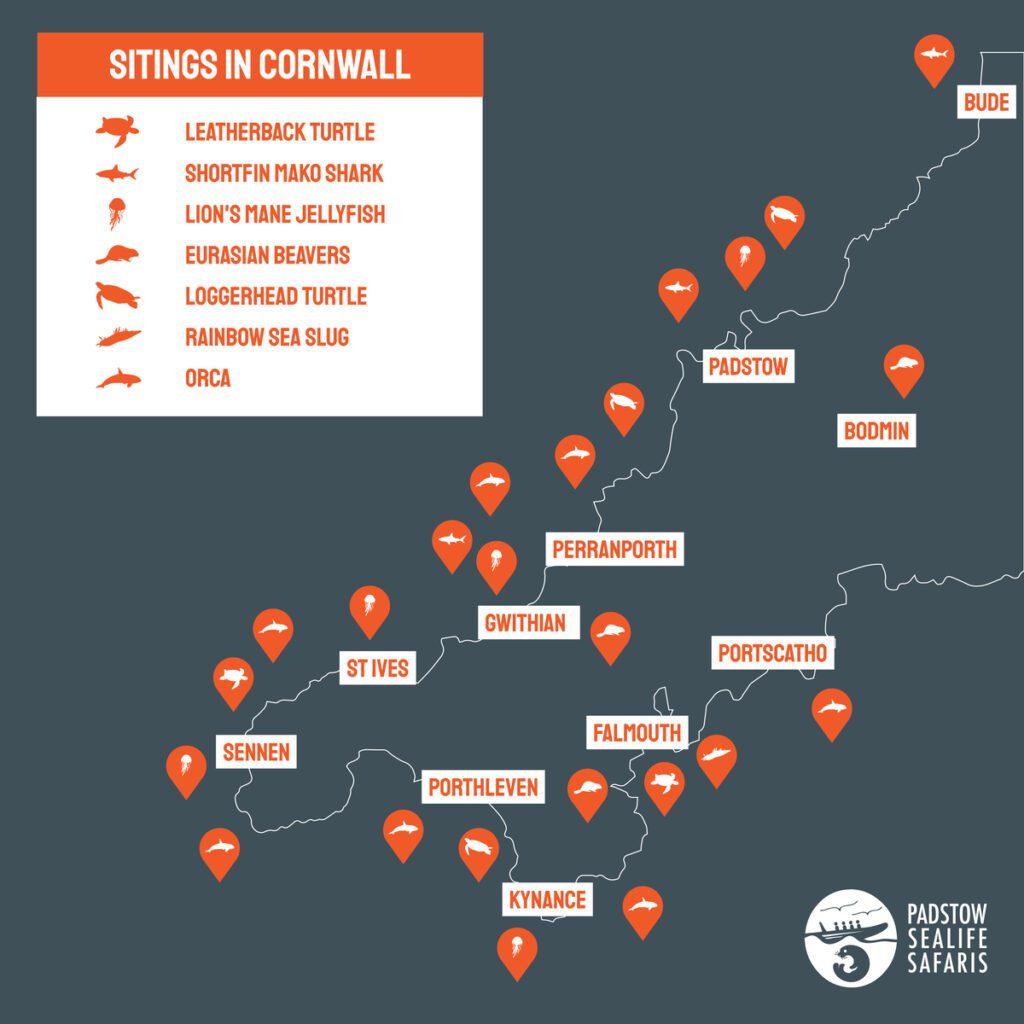
Leatherback Turtle
The Leatherback Turtle is the largest living turtle species, weighing between 200-700KG and a huge 2.6 metres long. Leatherbacks are a unique sea turtle as they lack a hard shell like Loggerhead or Green turtles, like Crush from the ‘Finding Nemo‘ movie; instead having a leathery skin that gives them their name. They can also cope with much colder water than hard-shelled sea turtles due to their huge size and thick fat layer that allows them to maintain a higher body temperature.
One of the reasons we find may these turtles in Cornwall is that they are migratory, known to swim huge distances from Central America all the way to the northeast Atlantic, covering over 5,000 miles – incredible right!
There have been leatherbacks spotted in the waters off Falmouth, Padstow, and Newquay. The Marine Conservation Society say these majestic animals visit our coasts to feed on jellyfish, with an average of 15 individuals spotted in UK waters every year, so to have them swimming off Cornwall is very special.
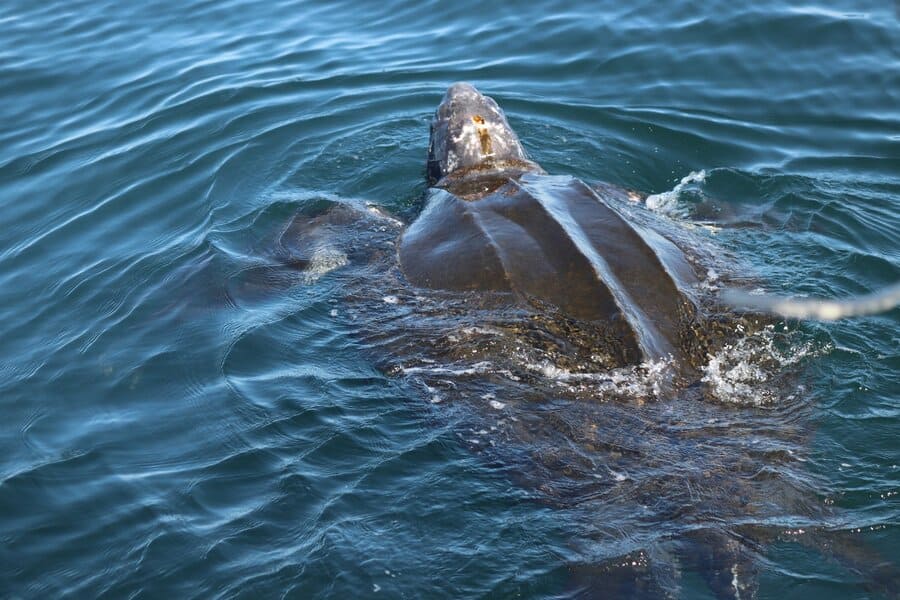
Shortfin Mako Shark
Cornwall is home to 21 species of Sharks ranging from your Smooth-hound to Thresher sharks. One of the rare visitors to this beautiful county is the Shortfin Mako. Mako in Maori means ‘Man-eating’ but this shark is not considered a threat in the colder north Atlantic waters and doesn’t reach nearly as big as the relatives found around the Gulf of Mexico.
The only ‘sighting’ that is known of the Shortfin Mako is one off St Ives in July 2007 where a shark was seen chasing 2 dolphins off Porthmeor Beach. Not to worry, though Shortfin Mako sharks love deeper waters and are found offshore hunting other marine animals, and have no interest in humans on the beach.
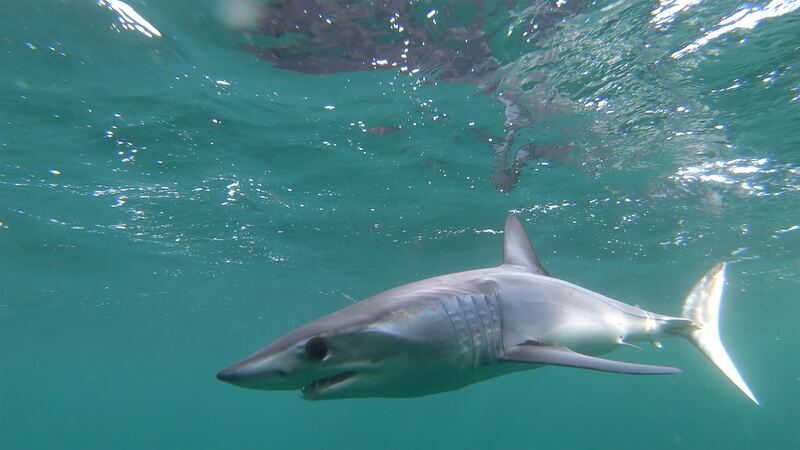
Lion’s Mane Jellyfish
Another rare visitor to Cornwall is actually the largest jellyfish in the world. The Lions mane jellyfish has a diameter of 2m in length and can have tentacles longer than a blue whale! The largest tentacles of a Lions mane jellyfish measured in at 36.5 metres, whilst the biggest Blue Whale ever recorded is 29.9 meters.
You can guess where this amazing jellyfish get’s its name from…its tentacles, although don’t be dazzled by its beauty. This jellyfish packs a real punch in those tentacles which are used to catch their prey. If you do happen to get stung we recommend consulting a doctor asap if the swelling or weals are severe.
The Lions Mane Jellyfish, although very rare in Cornwall, can spotted up the North and West Coast of Cornwall, from Sennen Cove, the famous Kynance Cove and up the North Coast past Gwithian Beach.
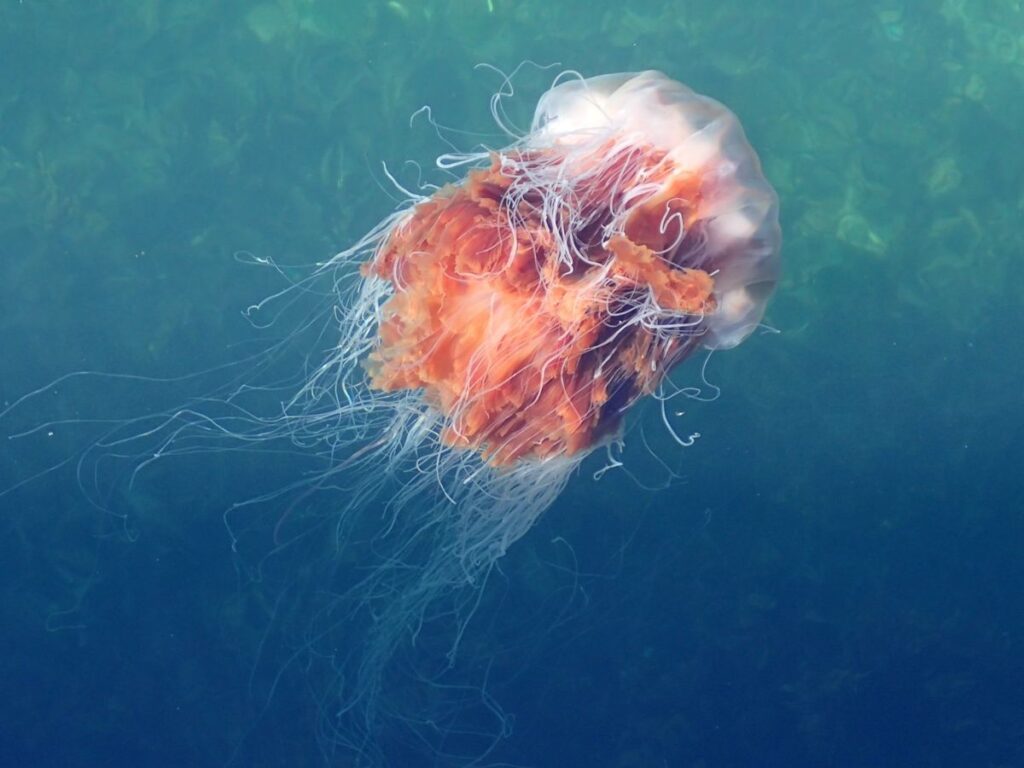
Eurasian Beavers
The return of Eurasian Beavers to the UK is happening right now. Originally beavers we’re hunted to extinction during the 16th century for their fur, meat and ‘castoreum’, a scented secretion used for perfume, food and medicine.
Now Beavers are making a comeback to the UK as they are being reintroduced, with many rewilding habitats being developed all over the UK, including our home in Cornwall. Beavers are very good engineers and are known as a keystone species, they engineer natural environments and ecological systems which provide nature with all the nutrients to prosper.
Woodland Valley Farm in Ladock, Cabilla in Bodmin Moor and Cornish Seal Sanctuary are among the sites rewilding Beavers back into the UK. You can visit these sites to checkout the Beavers at work.
Loggerhead Turtle
Loggerhead Turtles are very rarely seen in the UK but have recently been showing up on our beaches. Loggerheads get their name from their large heads that support powerful jaw muscles allowing them to crush crustaceans easily and are less likely to be hunted compared to other sea turtles.
These beautiful animals are primarily found in subtropical and temperate regions of the Atlantic, Pacific, and Indian Oceans, and in the Mediterranean Sea, and are highly migratory. In the Atlantic, the loggerhead turtle will migrate in a circular route around the central Atlantic, but young juveniles can sometimes be blown off course towards colder UK waters, where the temperature is too cold for them to survive for long periods.
Early this year, three juvenile Loggerhead Turtles were stranded on Cornish beaches, including this one seen on Perranporth Beach. All three turtles were rescued by the British Divers Marine Life Rescue (BDMLR) and transported to Newquay Bluereef Aquarium to be rehabilitated back to full health, with the eventual goal to release them back to the warmer waters of the Canary Islands when they are strong enough.
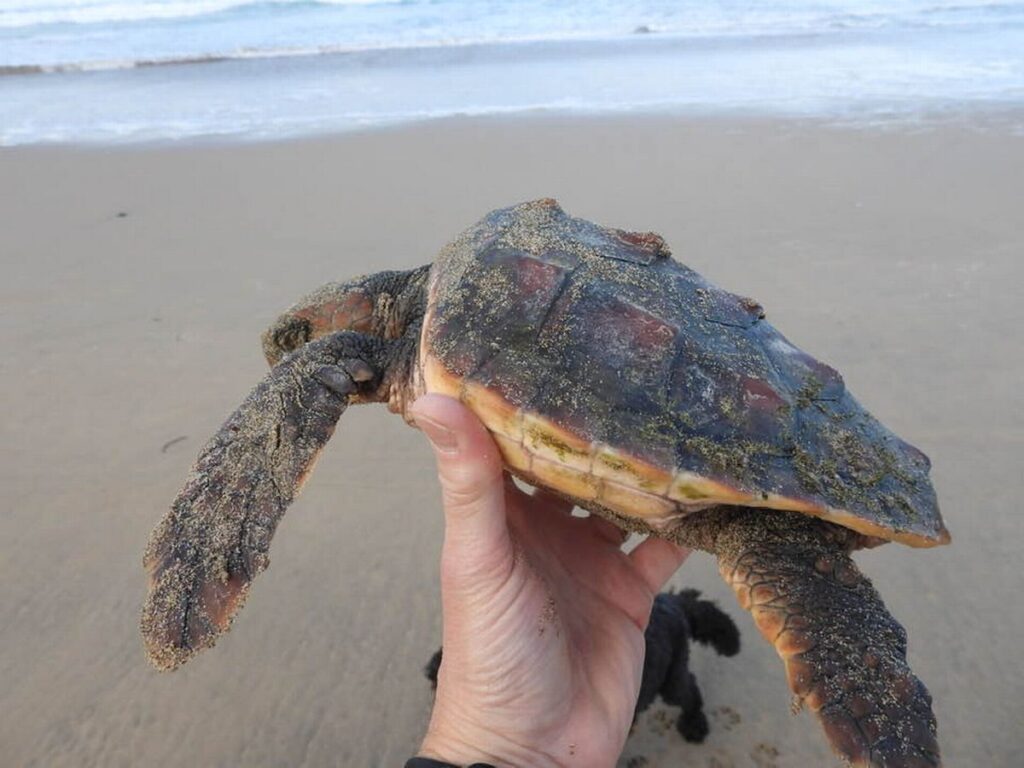
Rainbow Sea Slug
A new visitor to Cornwall, and surely the most interesting looking creature. Rainbow sea slugs are very rare in the UK as they prefer warmer waters of Spain, Portugal and France. One of these fantastic sea slugs was spotted this year at a rock pool in Falmouth!
Their scientific name is Babakina anadoni but referred to as the rainbow sea slug, and is very noticeable by its bright colours and unusual form. This is now 1 of 3 sightings in history of Rainbow sea slugs being in the UK. Experts believe that climate change is causing these slugs to move into the warmer waters of the UK, crossing the English channel.
This crazy looking creature was spotted by Vicky Barlow, a safari guide at The Rock Pool Project. Vicki found the Rainbow sea slug between a stretch of rock pools visible at low tide between Castle Beach and Gyllyngvase Beach.
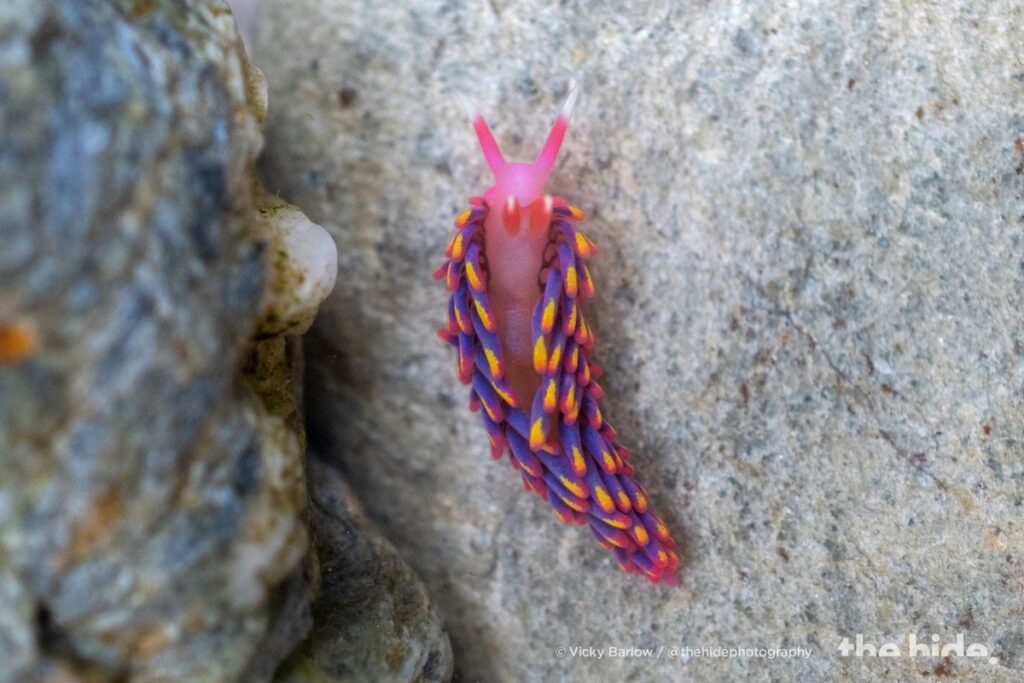
Greenland Shark
Greenland Sharks have only ever been recorded in twice in the UK, and one of those was in Cornwall. They prefer the colder waters of North Atlantic and Russian High Arctic and tend to favour deep water. In fact, they will dive up to 7,200 metres down into the murky depths.
Not much is known about the illusive Greenland shark, spending most of their time in the depths, but what we do know is that it has the longest known lifespan of any shark. Greenland Sharks live between 250-500 years. They are not known to be a threat to humans and typically feed on fish and seals, occasionally seen hunting off the coast of Canada.
The only Greenland shark seen in Cornwall washed up near Newlyn and unfortunately it was deceased, but a post mortem was conducted which found the individual to be around 100 years old – but still only a juvenile!
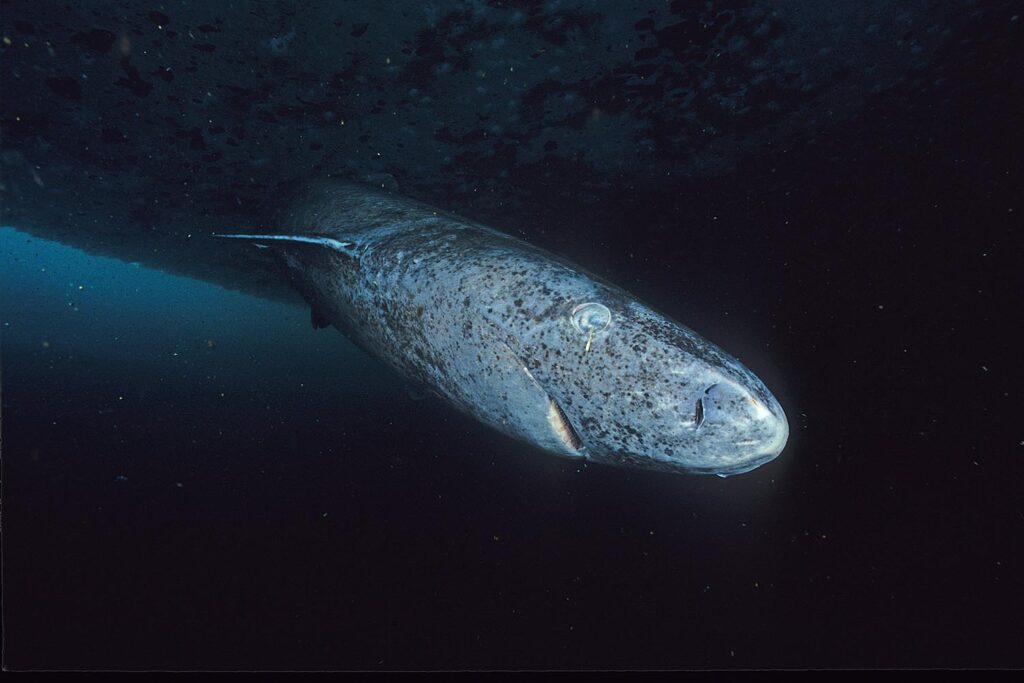
Orca
One of the most intelligent creatures in the sea, the orca is also commonly known as the ‘killer whale’. Orca are found in most oceans but prefer colder waters like Antarctica, Norway and Alaska. Typically feeding on fish, squid, and seals, they hunt in packs just like wolves.
Researchers have found the IQ of Orca to be equivalent to 15-16 year old humans. The size and structure of their brain has evolved to perceive the world around them through sound and they efficiently communicate, being the most acoustically sophisticated animal on the planet.
Yes, there have been Orca spotted in Cornwall! Although they are more frequently found around the north and west of Scotland, there have been several sightings in Cornwall over the past 15 years, from Trevose Head near Padstow, all the way to Mevagissey on the South Coast of Cornwall.
The most recent sighting was May 2021 off the coast of Porthcurno, West Cornwall. Spotted by Will McEnery-Cartwright as he was enjoying a coffee at the Minack Theatre, the two male orca sighted are known as John Coe and Aquarius and make up part of the Scottish West Coast community.
